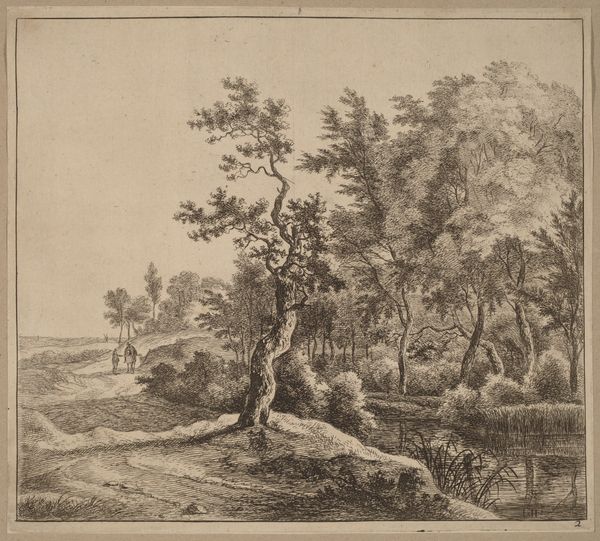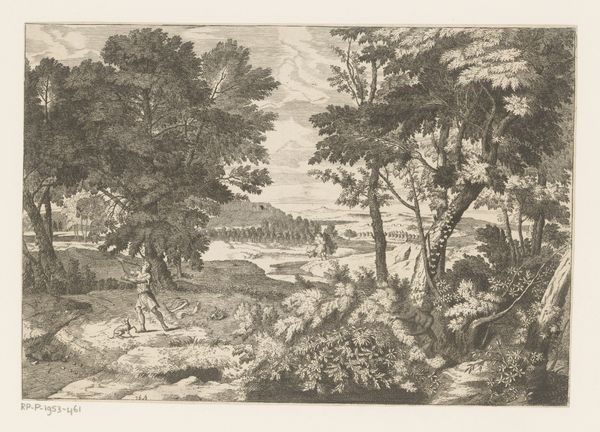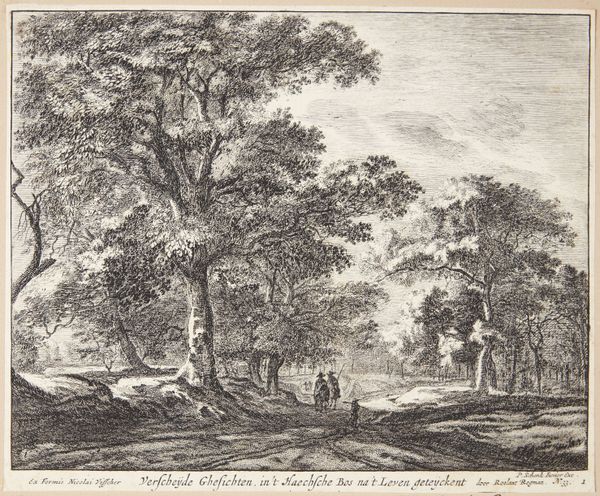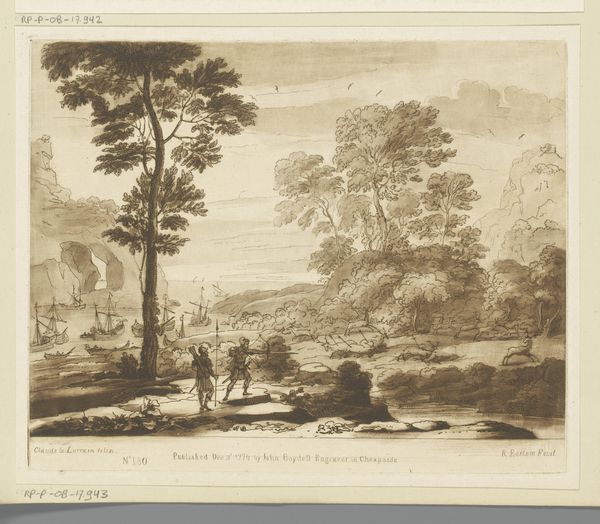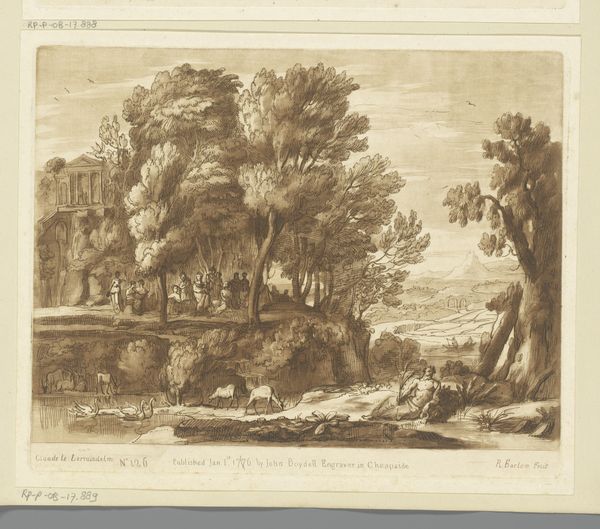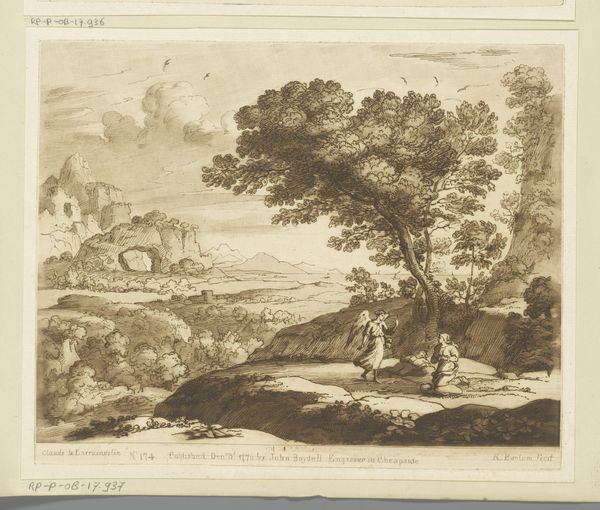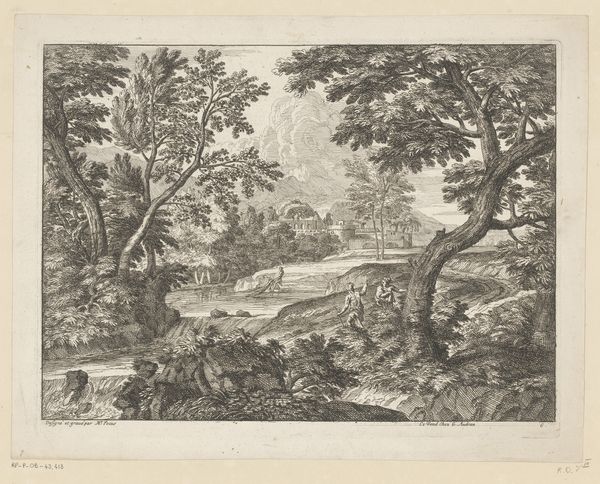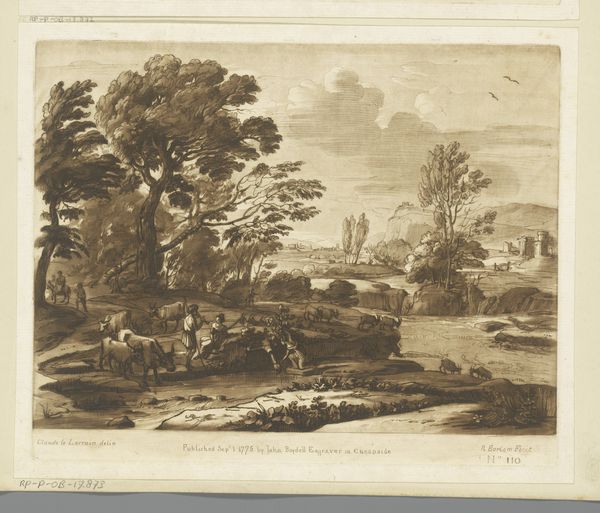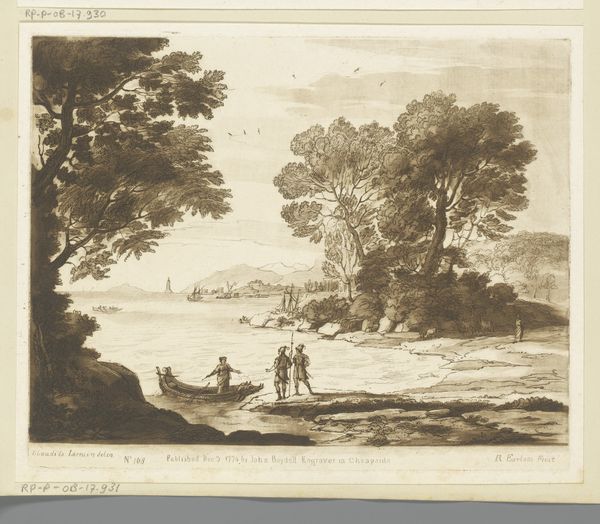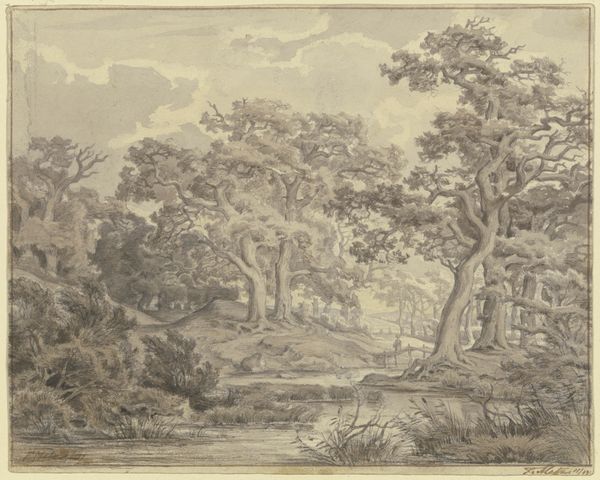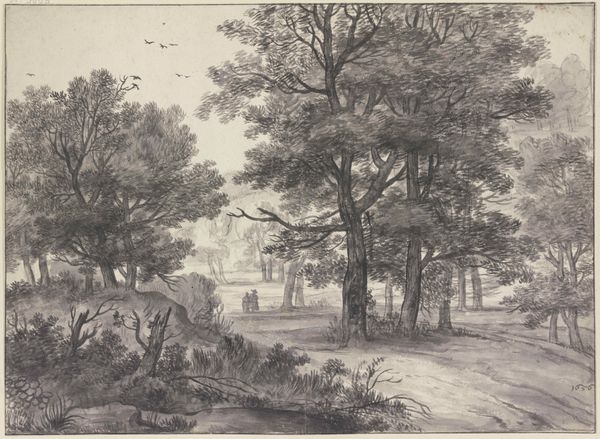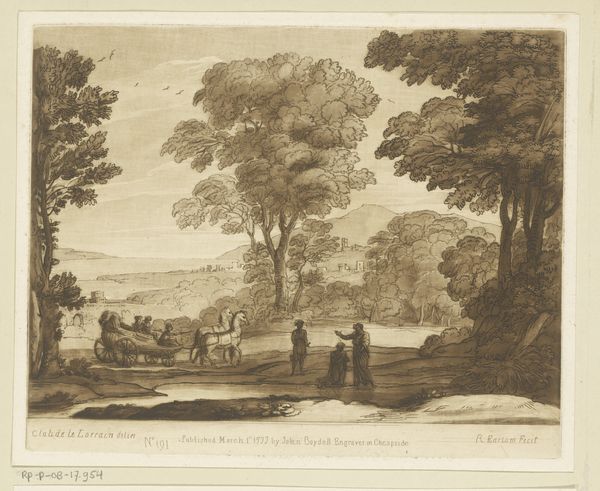
print, etching
#
neoclassicism
# print
#
etching
#
landscape
Dimensions: height 208 mm, width 259 mm
Copyright: Rijks Museum: Open Domain
Curator: Welcome. We are standing before Richard Earlom's "View of Tor Crescenza Castle in Rome," likely created between 1775 and 1779. The work is rendered in etching and printed with remarkable nuance, evoking an airy Neoclassical mood. Editor: Airy is one word for it! It looks to me like something I’d doodle if I were feeling particularly pastoral but also had a slightly melancholy hangover. All those carefully placed trees, and then the almost dreamy castle…it’s trying to be bright, but something's holding it back, isn't it? Curator: I see it as embodying a yearning for a classical ideal. Notice how the landscape is structured. The castle in the distance functions almost as an icon, a symbol of permanence and historical weight set within nature. Even the lounging figure suggests a moment of contemplation, reflecting on the past. Editor: Contemplation, or perhaps boredom! Look at those cows; they're barely sketched. The castle's all formality, and those feathery trees look like nervous tics. Perhaps the past wasn't as bright as it seems? Or maybe that “weight” of history just feels a bit heavy sometimes? Curator: It is more than simple historicism. The choice of etching lends a softness, and perhaps that lightness is a reflection of cultural memory rather than exact representation. Editor: You mean how nostalgia turns everything fuzzy? The artist romanticizing reality into a blurry daydream? Makes sense. I keep coming back to those cows. Even if they’re blurry, there are just these sad beasts making their way. They add an honesty that those stiff trees just can't pull off! Curator: Symbols exist within a visual language, of course. How they’re felt, and perceived differs from viewer to viewer. It's like music—the same notes resonate uniquely with each individual. Editor: Very true. This picture almost lulls me. Maybe the beauty comes not from the perfection, but from the fact that this scene is very “not quite”. That’s what makes it memorable, don't you think? Curator: Precisely. Richard Earlom prompts us to reconsider those things we have idealized for so long and to seek a truth that is less concrete and somewhat nuanced.
Comments
No comments
Be the first to comment and join the conversation on the ultimate creative platform.
